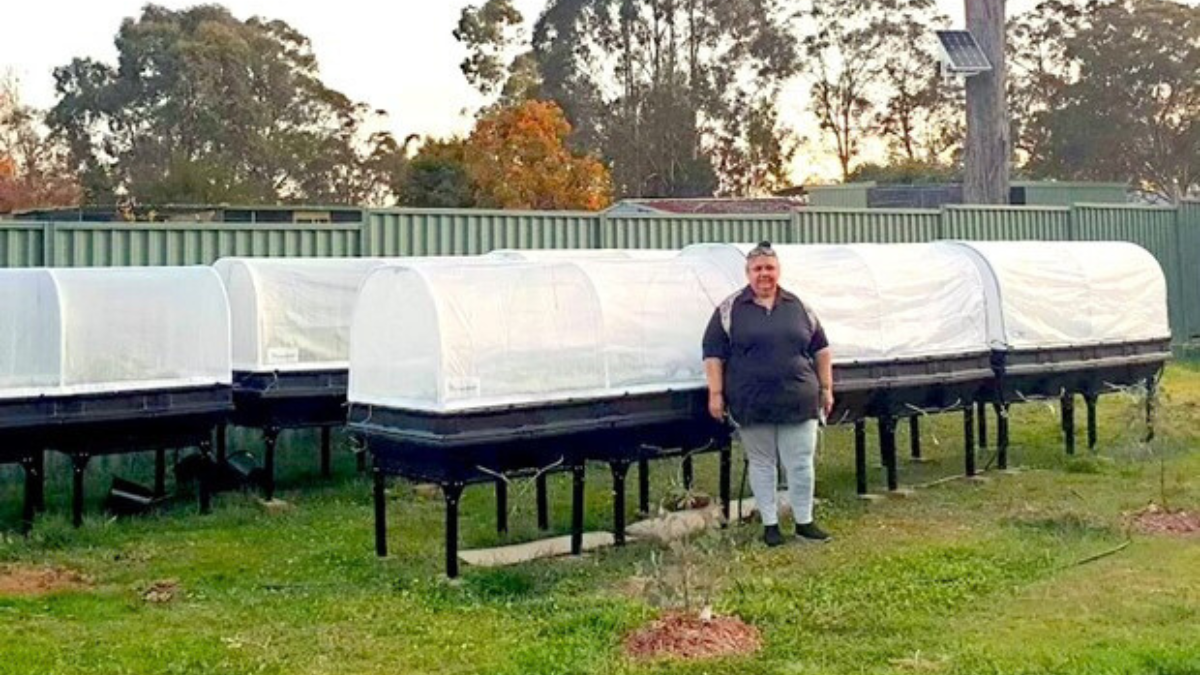
The world has its eyes on a remarkable local pilot promoting a return to using indigenous plants for their wellbeing benefits. 23 international journalists recently interviewed local Aboriginal Corporation, Koori Kulcha, about the extraordinary collection coming together with their Indigenous Garden project.
Made possible by grant funding through Council’s Community Assistance Scheme, native species from as far afield as the Northern Territory and Philip Island are being propagated in pods purpose-designed to recreate the climatic conditions of wherever the plants grow naturally.
The vision is to not only share Aboriginal knowledge of the healing properties of plants but make the traditionally harvested product commercially available for all to enjoy the potential health benefits.
According to Koori Kulcha’s Aunty Marie Barbaric, the Indigenous garden is home to plants that could potentially help treat your stomach upset, diabetes, heart condition, Alzheimers, and even cancer. Imagine the incredible possibilities to be found among these plants and the news is out that it’s happening right here in the Southern Highlands.
“The garden is ground-breaking and we were thrilled to have been interviewed by journalists from all over the world, and at the Botanic Gardens in Sydney, about our project here in the Wingecarribee Shire,” Aunty Marie said.
Part of a program called Environmental Warrior, getting these high-tech growing pods underway is just the beginning of great things to come. Once the garden matures, cooking classes will be introduced, using native herbs and spices in ways that have been handed down for generations. And with visitors anticipated from all over Australia and the world, immersive stays in on-site glamping accommodation are planned, with Federal Government funding.
“The customised pods are unique, making it possible for species which would otherwise never survive in our Highlands climate, to thrive, along with others which are only activated by going through a season of back-burning,” Aunty Marie says. “It’s very scientific. By bringing generations of cultural wisdom to the table with researchers, we’ve been able to perfect controlled atmospheres where each species can thrive, from arid conditions to rainforest environments.” Aniseed Myrtle, for example, is transplanted from the sub-tropical slopes of Nambucca Valley in Northern NSW. Traditionally used in Indigenous medicine/settings to treat anorexia, hiccups, and help the body fight free radicals.
The hope is to help bring about lower incidence of disease in our future communities by making it easier for people to return to using native ingredients known to have health benefits. “The health of our indigenous communities is shocking by any standards and the poor food choices of our modern society play a part,” Marie says.
“We’re so thankful to Council for this opportunity to find the funds needed to set this up well from the outset so that within three years we can expect to be producing at full capacity.” Aunty Marie says.
So that vital cultural knowledge is retained, the growing and traditional harvesting processes are documented in detail. “Preserving an important aspect of Aboriginal heritage and healing that will positively impact the quality of life of future generations is a pretty exciting thing to have happening here in our Shire,” says Wingecarribee Shire Council’s Coordinator Community Development, Corinne Buxton.
For weekly updates on all that’s happening in our Shire, and opportunities to get involved, join Council’s Your Shire e-news and follow us on socials.








